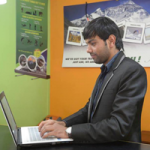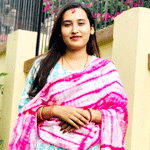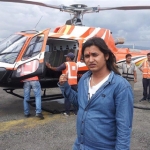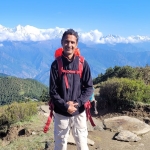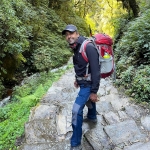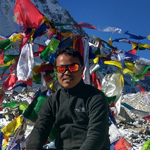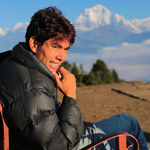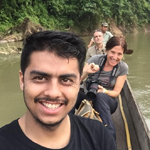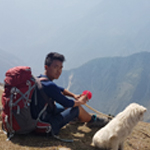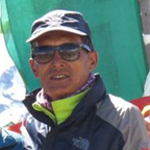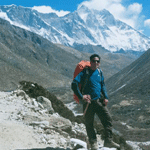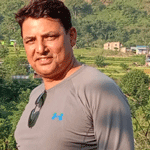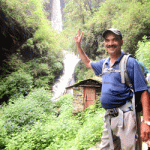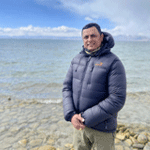Traveling to Nepal? Get answers to all your questions, from the best time to visit to the ins and outs of teahouse trekking. Much of the information here relates to trekking (given trekking in the Himalaya is a new experience for most people), but you'll also find answers to practical questions about visas and domestic transport.
FAQs on Trekking in Nepal
Nepal is home paradise filled with natural beauty, the diversity of trekking in Nepal cannot be found in any other region of the world. In fact, the lowest point in Nepal is 59 m above sea-level in the Terai region while the highest point is Everest, 8,848 m above sea-level; the two points are, in a straight line, only 200 kilometers apart.
From the plain lands of Terai to the high Himalayas, there is diversification and singularity in every aspect. This is what makes Nepal so unique. Due to variation in the topography and altitudes, Nepal has been famously spotted as a diverse Trekking Region for real adventure. Nepal offers normal trekking routes for short hiking which start from 2500m (Australian Camp, Ghorepani Poonhill) to above 4000m (Everest Base Camp, Annapurna base camp, Langtang valley, Annapurna circuit and many more). And I can tell you that every single trek has its own peculiarity and adventure.
Is it safe to travel in Nepal?
After the devastating earthquake in 2015, every visitor has had this common question in mind. And the answer is yes, it is safe to travel in Nepal. You can come here and enjoy without any hesitation or second thoughts. Nepal is one of the most fascinating places to visit on earth as well as really most safe spot to travel comparing to multiple countries due to religious nature of people and their natural kindness too. We will organize all the treks and tours as planned and are ready to welcome our guest with the safety assurance.
How is the current political situation in Nepal?
The political situation in Nepal is facing a transitional shift. Nepal is in the process of adopting a federal structure of governance form. From the political view, there are not many obstacles as you might think.
How can I get a Nepal visa for arrival?
You can get on arrival visa at Tribhuvan International Airport in Kathmandu. Most of the people can obtain a visa on entry to Nepal. Some countries’ visa will need to be arranged prior traveling. The price of visa depends on the number of days you will be staying. $25 is for 15 days from the date of issue, $40 for 30 days and $100 for 90 days tourist visa. You will need two passport size photos. Other documents are not required. You can visit or apply for an online visa through Immigration office website (http://www.online.nepalimmigration.gov.np/).
Do you have any airport pickup and drop off facility from the airport?
Yes, Trekking Plus has a pick-up facility as a complementary policy. At your arrival, one of our airport representatives will pick you up from the airport. You can recognize us at the spot easily through our company’s name card or your printed name card. When you complete your trip, we will drop you back to airport 3 hours before the flight departure.
What type of insurance should I get? How can I get it?
We advise you to get your general travel and medical insurance cover from your respective country. In Nepal, you should buy medical and mountain evacuation insurance for traveling. But, we don’t offer mountain rescue insurance here.
General FAQs
When's the best time to visit Nepal?
The peak seasons for trekking are the spring (Mar to May) and the fall (Sep to Nov) when you'll have clear skies and superb mountain views. Keep in mind; this is also when the trails are most crowded (although there are ways to avoid the crowds). The winter (Dec to Feb) and summer (Jun to Aug) months are also great times to visit—although weather can be unpredictable, these months offer a unique experience and fewer crowds. Check out our article on the best time to visit Nepal.
Spring season (March – May)
Spring season let you imagine yourself walking through a dense rhododendron forest with the colorful national flower of Nepal. If you are traveling to Nepal in spring season, the temperature rises but the possibility of precipitation remains. The flower blossoms and the environment are lush, beautiful and colorful which makes the atmosphere vibrant and so beautiful.
Autumn season (September – November)
Autumn season is the best season during the whole year. This is the most preferred season when the weather is stable, dry and clear. At this time of year, the sky is clear and you will be blessed with the best views of the White Mountains and blue sky ever. Also, the trail is neither too wet nor too slippery but the trails are most crowded. The lush valleys, hills, forests, river and waterfalls, you can see the blend of the natural beauty everywhere around whole country.
Winter season (December – February)
December to February is the coldest time of the year in Nepal. If you think cold weather is not a big deal, then this season is also a good season for trekking. However, trekking to high altitude is not recommended as everything is covered with snow and the temperature is very low. But as the weather is dry, this season can be awesome for those who would love to opt for trekking to the lower altitude regions of Nepal.
Summer season (June – August)
Generally, summer is not so preferred time of the year for trekking. Monsoon starts which makes the skies cloudy, roads muddy and slippery. Leeches in the trails and the unclear mountain views due to the clouds on the sky, everything about this season is not so charming.
Trekking Plus always there to make your travel to Nepal memorable no matter whatever the season. The weather may be sunny or rainy, cold or moist, Trekking Plus take you to your preferred places at any time of the year and per your time frame and interest.
What's it like during the monsoon season?
During the monsoon season (Jun to Aug), most of Nepal experiences heavy rain for a few hours each day. It's humid, wet, and the trails in the lower regions (Ghorepani, Ghandruk, Langtang, etc) can be quite muddy. That being said, it's still a great time to visit if you don't mind the rain — you'll have the trails to yourself, the skies often clear up in the morning, and certain treks offer stone-paved trails that drain the rain and make for easy trekking. Also, certain regions, like Mustang and the upper reaches of Everest, lie in the rainshadow of the Himalaya and receive little rain.
What's the difference between private and group trips?
Private trips are tailor-made itineraries built around your travel dates and personal interests, whereas group trips (which is what most tour companies offer) are pre-packaged and depart on specific dates. Group trips are also open for others to join, whereas private trips are just for you. At kimkim, our specialty is putting together private tours, as we believe this is a more meaningful and rewarding experience.
How do I get my visa for Nepal?
For most nationalities, you can get your visa on arrival in Kathmandu. It takes around 45 minutes and is the most convenient way to get your visa. You can also apply for a visa in advance from a local Nepali consulate in your country if you'd like to have everything arranged in advance.
How much luggage can I take on domestic flights?
For mountain flights, you're allowed 5 kg. for carry-on and 10 kg. for checked-in luggage. For non-mountain sector flights, the check-in allowance increases to 20-25 kg. (More information)
How many days should I spend in Nepal?
Well, If you're mainly looking to experience Nepal's cultural and natural highlights, you can have a great experience a week, where you can visit two regions and add on day adventure activities in pokhara (likely, Pokhara and Kathmandu). If you would like to trek into the Himalaya on a multi-day, you'll have at least 10 days to have enough time to reach higher altitudes and safely acclimatize. To undertake one of the longer, classic treks in Nepal or to combine multiple regions and activities into one visit 2 weeks or more than 2 weeks is ideal. Check out our activities on how many days to spend in Nepal.
Are hotels included in the trip price?
Our specialists organize complete tours, meaning everything is taken care of from the moment you arrive in Nepal to the moment you leave, including all of your accommodation. We recommend letting the specialist organize your accommodation, as this saves you time and they know the best places to stay based on your style, budget, and preferred neighborhood—just let them know your preferences. That being said, you can organize your own hotels, as well, and let your specialist know you're organizing them on your own.
Are there any extra expenses not include in my trip price?
Personal expenses (tips, soft drinks, bar bills, laundry, telephone calls, donations, and extra snacks, etc) are not included in your trip price. If you're going trekking, the only things you'll need to pay for out of pocket are wifi and battery charging (when available), extra meals outside of what's included, alcohol, and soft drinks.
